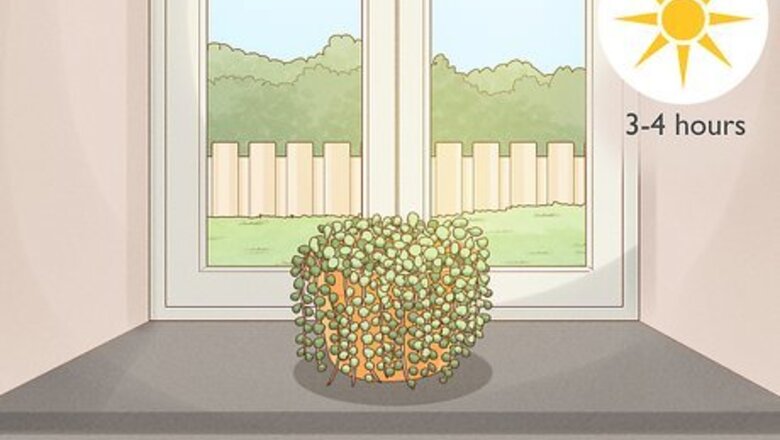
views
- Keep your plant in a spot that gets plenty of partial light, like a west-facing window. Only water it when the soil dries out, as it develops root rot easily.
- Propagate string of pearls by gently planting a 3 to 5 in (7.6 to 12.7 cm) cutting in damp soil. Wait 3-5 weeks for the plant to root.
- Repot your plant when it gets too big for its current pot. Inspect your plant’s root system yearly to see how it’s doing.
General Care
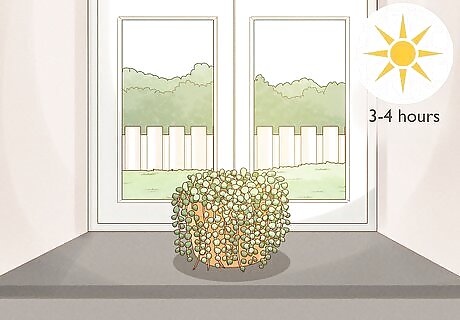
Set the plant near a window so it gets 3-4 hours of sunlight each day. Look for an open space near a window on the east or west side of your home (or any window that gets plenty of light throughout the morning or afternoon). If possible, set your plant on the windowsill so it can soak up 3-4 hours of light each day. It’s okay if your home only has indirect light—all that matters is that the indirect light is very bright. Make sure that your plant isn’t spending too much time in the sunshine, though! If your plant starts to shrivel after being placed in a sunny spot, it might require a little more shade.
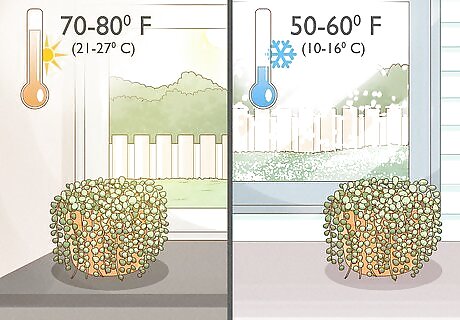
Place your plant in a 70 to 80 °F (21 to 27 °C) room during the summer. String of pearls naturally grow in southwestern Africa, so they prefer pretty warm temperatures. During the spring, summer, and fall months, keep your plant in a room that’s consistently 70 to 80 °F (21 to 27 °C), so it can really thrive. When winter arrives, keep your plant in a cooler space that’s around 50 to 60 °F (10 to 16 °C). Don’t worry about misting your plant or setting up a humidifier near it. If anything, too much moisture and misting may lead to rotting. If your plant’s pearls start falling off, it could be a sign that your plant is in a spot with lot of drafts.
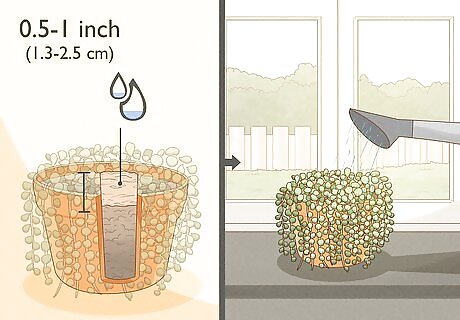
Water your plant when the top ⁄2 to 1 in (1.3 to 2.5 cm) of soil feels dry. As a succulent, the string of pearls plant doesn’t need a lot of water; in fact, it actually tends to get root rot when it’s watered too much. During the spring, summer, and fall months, only water your plant when the top ⁄2 to 1 in (1.3 to 2.5 cm) of soil feels dried out. During the winter months, don’t water your plant as frequently—once per month is enough. Your plant will let you know when it needs water! The pearls start to shrivel up when it’s thirsty. Always water just the top of the plant! String of pearls are susceptible to root rot, so you don’t want lots of moisture collecting at the bottom of the pot.
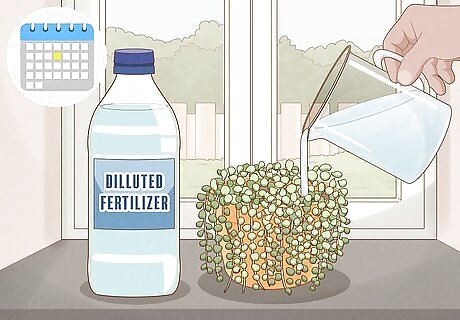
Feed your plant diluted fertilizer once a month during the spring, summer, and fall. Dilute a balanced plant food by about 50% and pour the recommended amount over your plant’s soil. Don’t overdo it, though—too much fertilizer can do more harm than good. Keep in mind that string of pearls naturally grow on pretty nutrient-deficient land, so they won’t suffer without the extra nutrients. Check the label to see how the fertilizer needs to be diluted.
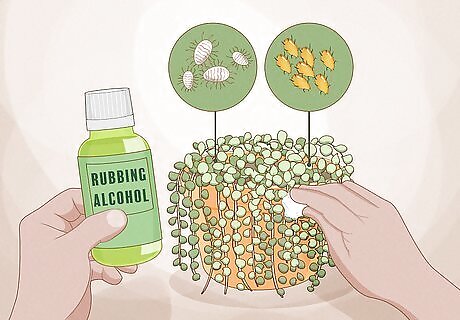
Get rid of mealybugs and aphids with rubbing alcohol. Clear away any pests with a rubbing alcohol-soaked cotton swab. Chances are, though, pests aren’t going to be the biggest threat to your succulent—root rot is. Aphids are a light yellow or green color when they’re nymphs, and are multi-colored as adults. Some of them have wings, while others don’t. Mealybugs have a waxy appearance and may leave behind white wax on your plant.
Propagating
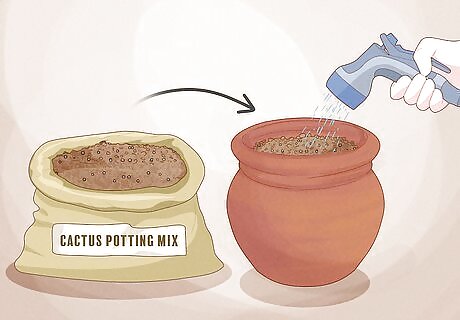
Fill a clay pot with a damp cactus mix. Scoop some cactus mix into a small clay pot, which will serve as the base for your string of pearls cutting. Then, sprinkle the soil with water so it’s moist before propagation. Don’t have cactus mix? Combine regular potting mix and perlite or coarse builder’s sand together at a 2:1 ratio. Clay pots provides plenty of air circulation, which is ideal for string of pearls plants.
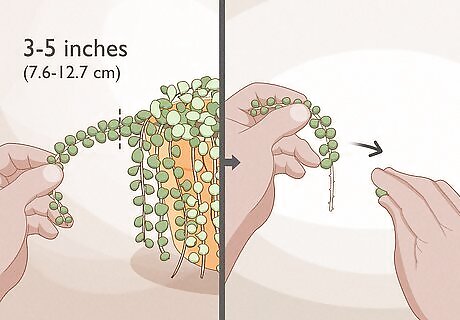
Snip a 3 to 5 in (7.6 to 12.7 cm) section of stem and remove the lower pearls. Take a clean knife or set of pruners and cut off a small piece of your plant. Then, gently twist off the bottom 3-4 pearls, so you have an open section of stem to work with. Make sure to sterilize your pruning tools before you use them so you don’t spread any potential diseases. Some people like to lay out their cuttings for 24-48 hours to give them a chance to dry out, which may help keep the plant from rotting further down the line. You don’t have to do this, though!

Place the end of the cutting into the potting mix. Slip the bare end of the stem cutting beneath the surface of the damp soil, along with a couple of the lower pearls. During propagation, roots will start to emerge from these buried nodes. You don’t need any rooting hormone when propagating a string of pearls plant.

Set the cutting in a bright, indirectly lit space and mist it as needed. Like its parent plant, propagated string of pearls need lots of bright light in order to thrive. So, stick your newly-potted cutting in a room that gets lots of bright and indirect light. Don’t worry about watering the cutting—just mist the surface of the soil throughout the week. String of pearl cuttings take anywhere from 3-5 weeks to develop roots and successfully grow on their own.
Repotting
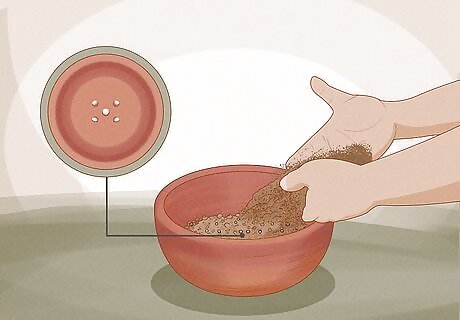
Grab a clay pot with a drainage hole and fill it with a well-draining soil mixture. Grab a clay pot that’s large enough to comfortably hold your plant—a shallow pot with a couple of drainage holes is ideal. Put 1 to 2 in (2.5 to 5.1 cm) of cactus mix along the bottom of the pot, so your existing plant doesn’t sink too low. If your pot is too large, your plant won’t grow as well. Some gardening enthusiasts suggest repotting your plant as soon as you bring it home from the store. In some cases, string of pearls aren’t planted in the right soil or given the best drainage at plant shops.
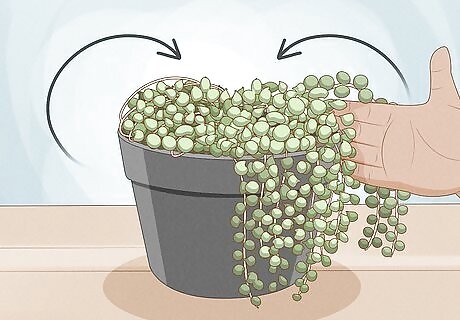
Fold the dangling tendrils carefully over the top of the plant. Gently lift up different sections of stems and set them on the surface of the pot. Repeat this process around the entire circumference of your pot until all of the stems are stacked and no longer dangling. They might look a bit messy at this point, but that’s okay! Getting the stems out of the way makes your plant a lot easier to repot and handle.
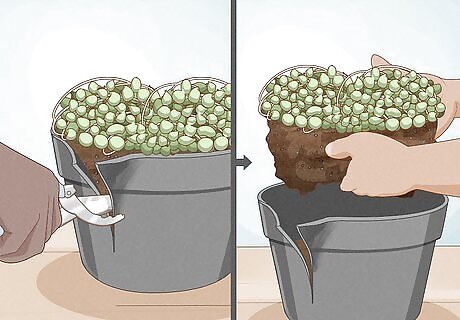
Remove the plant from its existing planter. If your succulent is in a plastic planter, use a pair of pruners to slice down the side of the plastic. Then, use both hands to free and lift the plant up and out of its original container. If your existing root system isn’t overgrown and there’s some leftover soil at the bottom of your old planter, transfer it over to your new pot to help cushion and support the plant.
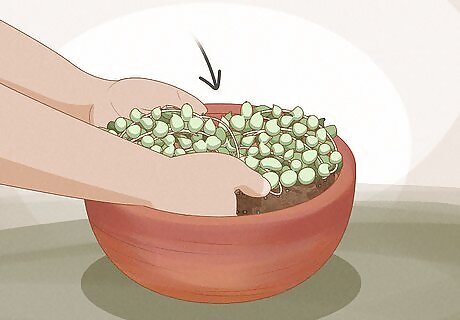
Transfer the plant into its new pot and add extra soil. Center your string of pearls plant over the pot and place it down. Then, press the soil down around the plant and add more cactus mix as needed, making sure there aren’t any pockets or gaps. Try to leave around ⁄2 in (1.3 cm) of space between the soil surface and the rim of the pot; that way, you won’t have too much trouble watering it. Once your plant is secure, carefully lift and unfold your plant’s stems so they’re draped over the sides of your new pot.
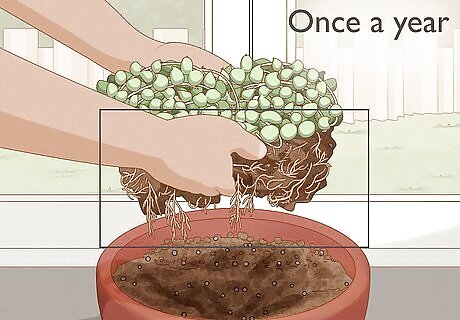
Inspect your plant annually and see if it needs to be repotted. Carefully remove your plant from its pot to get a closer look at the root ball. Do the roots look really cramped and crowded? If so, it might be time to repot your succulent in a larger home. Take a look at your plant’s stems, too. If the foliage is especially bushy, that’s also a sign that it’s time to repot.



















Comments
0 comment